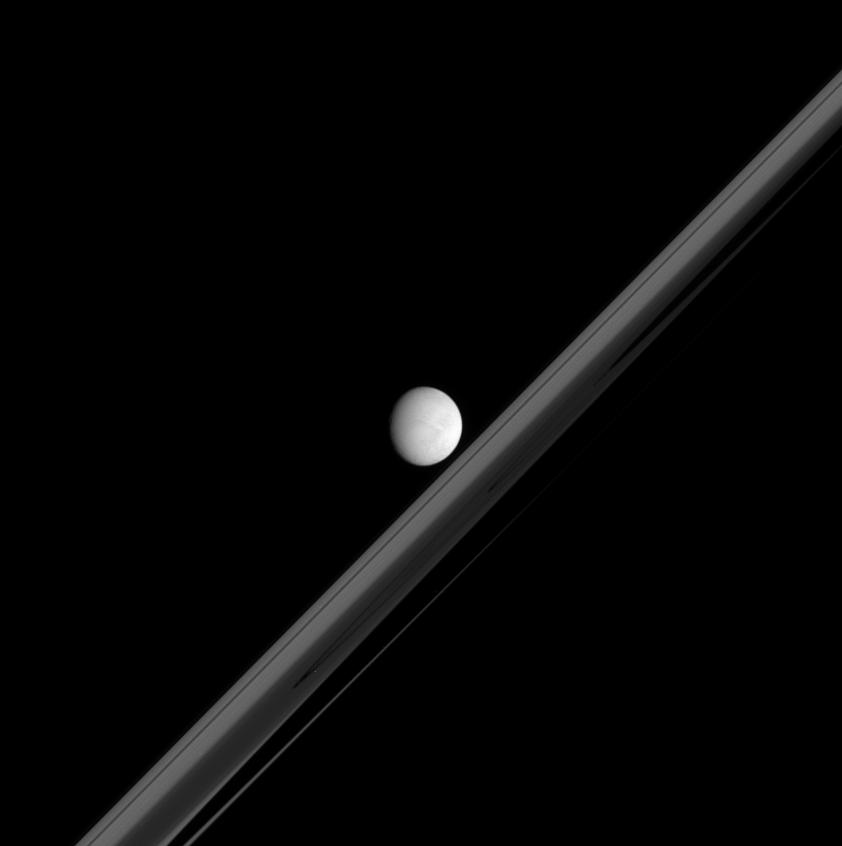Sideways Shadow

| PIA Number | PIA06628 |
|---|---|
| Language |
|
Saturn's bright moon Enceladus hovers here, in front of a rings darkened by Saturn's shadow. Enceladus is 505 kilometers (314 miles) across.
This view is from less than one degree beneath the ring plane. If seen from directly beneath the rings, the planet's giant shadow would appear as an elongated half-ellipse; the acute viewing
angle makes the shadow look more like a strip here. (See The Greatest Saturn Portrait...Yet, for a different viewing angle). The dark shadow first takes a bite out of the rings at the right, where the distant, outermost ring material appears to taper and fade.
Ring features visible in this image from the outer ring edge inward include: the A ring, the Cassini Division and the B ring. The C ring is the darker region that dominates the rings here. The two gaps visible near the center and below the left of the center are the Titan Gap, about 77,800 kilometers (48,300 miles) from Saturn, and an unnamed gap about 75,800 kilometers (47,100 miles) from the planet.
The image was taken in visible light with the Cassini spacecraft narrow-angle camera on March 7, 2005, at a distance of approximately 1.1 million kilometers (650,000 miles) from Enceladus and at a Sun-Enceladus-spacecraft, or phase, angle of 30 degrees. The pixel scale is 6 kilometers (4 miles) per pixel.
The Cassini-Huygens mission is a cooperative project of NASA, the European Space Agency and the Italian Space Agency. The Jet Propulsion Laboratory, a division of the California Institute of Technology in Pasadena, manages the mission for NASA's Science Mission Directorate, Washington, D.C. The Cassini orbiter and its two onboard cameras were designed, developed and assembled at JPL. The imaging team is based at the Space Science Institute,
Boulder, Colo.
For more information about the Cassini-Huygens mission visit http://saturn.jpl.nasa.gov . For additional images visit the Cassini imaging team homepage http://ciclops.org .
Credit: NASA/JPL/Space Science Institute
